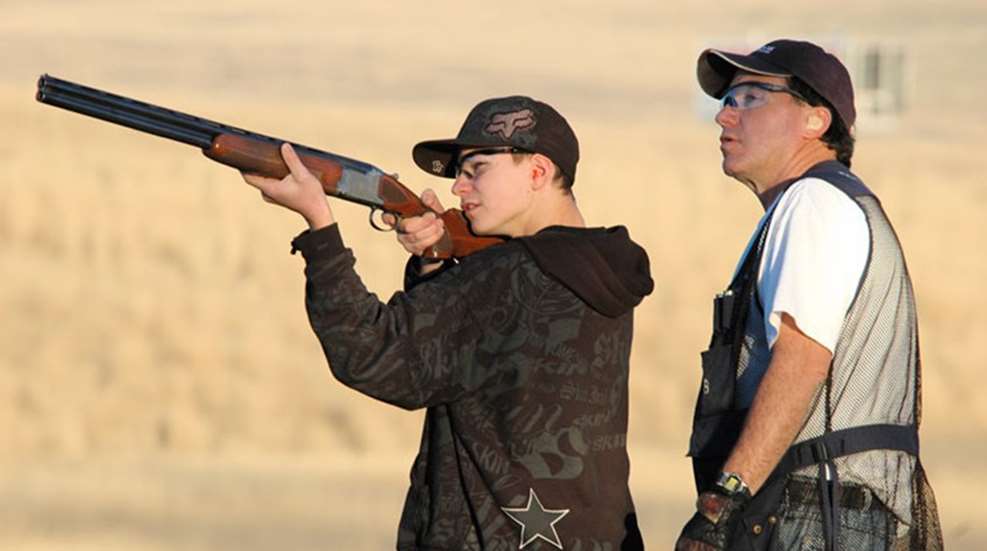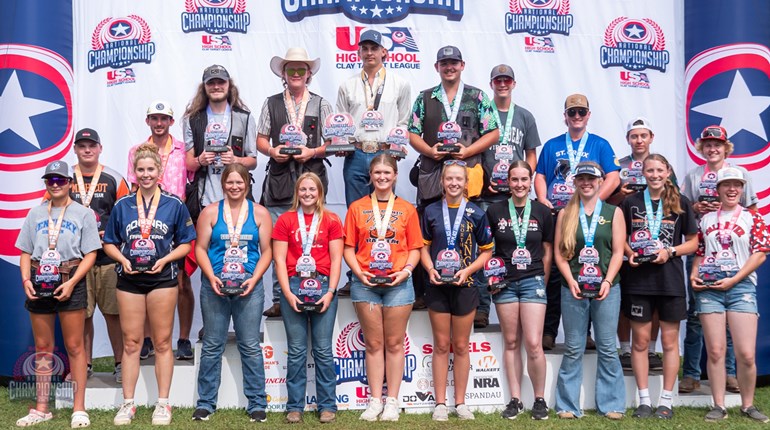
Firing a handgun, rifle or shotgun accurately takes special skills if you are to consistently hit your target or humanely harvest game. Now to take a look at three of the major shotgun sports that can be used to tune us up for hunting small game or various game birds. I will begin with the most popular, which is likely due to most all gun clubs offering trap shooting.
Trapshooting:
This sport got its name from a contraption, the trap, which throws clay targets into the air. This is done with angle variations to simulate the flight of a flushed bird. Having been conceived in England around 1793, previous to using a clay target were live birds that were released into the air. To add variety, there are three basic types of trapshooting, beginning with the most common, the 16-yard event. Here the shooter stands on a pad/station located 16 yards behind the trap house where the clay targets are launched. With five pads total, after a shooter calls for the target and fires, then the other shooter does the same until all five competitors have fired in sequence five shots from that one station. Then the shooter on the far right moves to the far left with everyone else moving down one pad so to do it all again. For the total of 25 shots, the targets will fly anywhere from 48 to 52 yards from the shooter and at any angle within 45 degrees to the left or right of a rising straightaway, which should be the easiest shot. Due to this distance, a tight choke as a full or modified is used. When it comes to shot size, commonly used is 1 or 1-1/8 ounces of 7½ or 8 shot. Be aware that the higher the number, the smaller the shot BB.
Next is the Handicap Event: Shooting rotations and shots fired are the same except that the shooter, depending on previous scores/ratings, moves backwards from the trap house anywhere from 17 to 27 yards. If a great shot, moving back to that 27-yard line changes the leads and difficulty of the shots.
The third most common event is Doubles: Although shot from the 16-yard line, two clay targets are released at the same time, thus the term doubles. Here, a standard round of doubles is 50 shots, 10 from each of the five stations.
Skeet shooting:
When first introduced to skeet in the late 1960s, I was to learn that the name comes from an old Scandinavian word meaning “shoot.” Unlike trap, one knows the angle of all the clay targets as you move between a high and a low trap house over 8 stations in a semi-circle as targets are released, and everyone starts at station one. What makes this type of shooting semi-predictable is that when calibrating the traps, the clay targets must fly through a 3-foot hoop positioned at the center of the field and 10 feet in the air for calibration. As the shooters move through the stations, on station 1, 2, 6 and 7, you shoot two singles and then two doubles from each. Also, with your first miss, you get to shoot that one over which counts and does not erase that miss. This is to use up 25-shots! If you get them all, then with one shot left, you then take it for the last or 25th shot. Since all shots are 10 to 20 yards from the shooter, an open choke as skeet or improved cylinder is best. To add difficulty, you also have the option to shoot in events for smaller gauges, such as the 20, 28 and .410. I have had 100 x 100 in all such events except for the .410; the best I did in a state shoot was 99 x 100, because missed the easier first one out. Lesson, nothing is easy but that miss woke me up fast!
Sporting clays:
Of all these sports, it is sporting clays that is most closely related to hunting situations. This is because every course of fire and station is different, unlike trap and skeet which are standardized no matter where you shoot. Here is an example of the different terminology used.
Say pull and you get one target. If it is a TRUE PAIR, two targets are launched in different directions at the same time. If this station is REPORT DOUBLES, the first target is released on your "pull" command, and as soon as you fire, the second is launched. Due to the wide variation in distances and varieties of targets thrown, some shooters change chokes between stations. Common is a 7½ or 8 shot and then for close targets, some may use a number 9. As a general suggestion, if you're using an over-under, try an Improved Cylinder in one barrel and a Light Modified choke in the other for the second shot. For shot size, I usually use a 7½ or 8 shot for everything.
Hand-eye coordination learned shooting clays:
Like playing baseball or tennis when whatever is used to hit a ball in motion, it takes practice. Once your hand and eye work in unison, you can hit that ball...which is the same when using shot from a shotgun to break a clay target. Here is a little drill to try! Look at something small 5-10 yards away, turn your head, close your eyes and rapidly point with a finger at the object. Do this a few times and you will find that you can get on a target faster.
Lessons learned from these shooting activities:
If you're a hunter desiring to participate in such off-season games, shooting clay targets in any of these will serve to help you develop sound skills with your shotgun. When I started to get serious about skeet years ago, I would shoot hundreds of rounds a week. What I noticed when bird hunting is that when a pheasant or grouse broke and started to flee, I could point, lead if necessary and fire which became automatic. With sound techniques learned, I seldom missed and it all goes back to breaking clay targets.






































